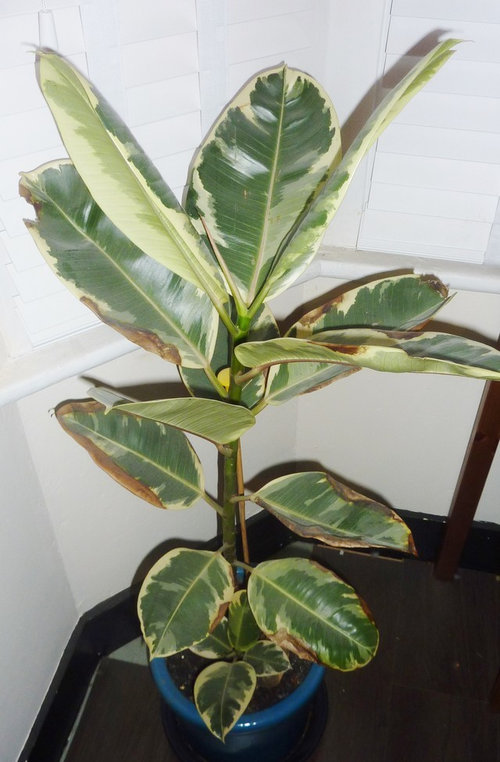Ficus Elastica Browning leaves
Juliande
10 years ago
Related Stories

GARDENING GUIDESGot Frost-Damaged Plants? How It Happens, and When and How to Prune
Crispy brown leaves are a sure sign that Jack Frost has been to your neighborhood
Full Story
HOUSEPLANTSPlay Up Some Fiddleleaf Figs for a Lively Indoor Tune
Strike a dramatic chord in a minimalist scene or a country note in a rustic setting — fiddleleaf fig plants harmonize with any style
Full Story
MOST POPULARThe Perfect Houseplant for People Who Kill Houseplants
If you can fill a jar with water, you can keep golden pothos vine happy — and it will pay you back with cleaner air and a greener home
Full Story
HOUZZ TOURS25 Most Bookmarked Colorful Homes of 2012
Ready to be dazzled? These homes had Houzzers clicking all year to compliment their radiant interior and exterior hues
Full Story
HOUSEPLANTS8 Essentials for Healthy Indoor Plants
Houseplants add so much to our homes — and can thrive when grown in the right conditions. Keep these tips in mind
Full Story
CONTAINER GARDENSHappy Houseplants, Happy People
Potted plants add life and beauty to a room. Learn easy ways to keep them healthy
Full Story
HOUSEPLANTS10 Top Plants to Grow Indoors
Brighten a room and clean the air with a houseplant that cascades artfully, stretches toward the ceiling or looks great on a wall
Full Story
DECORATING GUIDESThe Dumbest Decorating Decisions I’ve Ever Made
Caution: Do not try these at home
Full Story
HOUSEPLANTS8 Houseplants You Can't Kill
They're forgiving and let you forget. Houseplants don't get any easier than this
Full Story
TREESHow to Use Trees Inside
Bring nature close by integrating the beauty of trunks and trees — even smaller leafy trees — into your home
Full Story









tapla (mid-Michigan, USDA z5b-6a)
Pat z6 MI
Related Professionals
Edmond Landscape Architects & Landscape Designers · Windham Landscape Architects & Landscape Designers · Clemson Landscape Architects & Landscape Designers · Manorville Landscape Architects & Landscape Designers · Manchester Landscape Contractors · Dallas Landscape Contractors · Downey Landscape Contractors · Farmington Landscape Contractors · Fishers Landscape Contractors · Maywood Landscape Contractors · Siloam Springs Landscape Contractors · Westchester Landscape Contractors · Wethersfield Landscape Contractors · Casselberry Landscape Contractors · Ansonia Landscape ContractorsJuliandeOriginal Author
tapla (mid-Michigan, USDA z5b-6a)